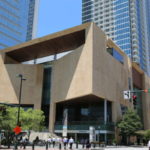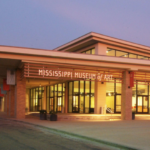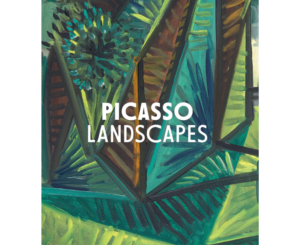Images:
https://www.mintmuseum.org/exhibition/picasso-landscapes-out-of-bounds/
“There are four [Picasso] landscapes that I wish you could see. Strange that no one has considered him as a great landscape painter.” – Alice B. Toklas, 1948
Pablo Picasso depicted landscapes throughout his entire life. From his earliest days in art school until the year before his death, landscape mediated his perception of the world and jumpstarted his creative evolution. The genre would serve as a catalyst for his formal experimentation, including early Cubism; as a field in which to investigate urban modernity; as an interface between humankind and nature; as a site for large-scale sculptural intervention; as a space of personal reflection; and as a symbol of history, heritage, and resistance. Featuring over forty-five paintings and sculptures spanning Picasso’s full career, the exhibition Picasso Landscapes: Out of Bounds will explore the artist’s lifelong fascination with landscape by spotlighting his innovative reimaginations of this traditional genre.
Within Picasso’s vast oeuvre—which encompasses all genres—landscapes have received the least scholarly attention. Yet to ignore Picasso’s landscapes is to omit a crucial dimension of his achievement. Landscapes afforded Picasso the opportunity to reflect upon his personal and cultural milieu while also engaging with art historical traditions. This exhibition will position the genre of landscape as a creative lodestar in his life, inspiring major breakthroughs in his oeuvre and seismic shifts in the painting canon. Picasso Landscapes also charts the artist’s changing sense of place over decades of travel and relocation, spotlighting Picasso’s reactions to the modern city, wartime occupation, and the industrialization of rural France.
Picasso was especially attuned to tensions between humanity and nature, particularly the ways in which the pressures of modern-day life imparted themselves on the character and function of the landscape. As early as 1900, his canvases began telegraphing the powerful forces of nature in contrast with urban growth across Spain, particularly in Málaga, Madrid, Barcelona, and Horta de Ebro. The destruction and endurance of French culture define the artist’s cityscapes of Nazi-occupied Paris during World War II. Picasso’s grand Côte d’Azur landscapes, completed at the end of his career, reveal the rapid buildout of a region where, a few decades earlier, he had captured the lives of peasants and laborers. The devastation of the Anthropocene and the political rise of the ecological movement in France coincided with Picasso’s last landscape of 1972, an immense work that reads like an epitaph to both his creative and social life.
Beyond serving as a navigational tool for his encounters with the physical world, Picasso also saw landscape as a conduit to the artistic forebearers who had defined and honed painting traditions. Classical landscapes of the seventeenth century were important touchstones for Picasso; his ambitious, large-scale canvases adopted the formal structure of the ideal vista articulated by Claude Lorrain and Nicolas Poussin. Picasso often used landscape painting to interrogate the work of Impressionists and Post-Impressionists, including Pierre-Auguste Renoir, Paul Cézanne, and Vincent van Gogh, who were the most celebrated artists at the time of his 1901 arrival in Paris. Van Gogh’s presence can be felt in Picasso’s paintings of the South of France, such as the nocturne Moonlight in Vallauris (1951) and the brushy, dramatic Landscape (February 22, 1965) of Mougins. Picasso’s other predecessors in Provence, Renoir and Cézanne, both consistently painted nudes set within the gardens of the artists’ country retreats. Following his 1958 acquisition of the Château de Vauvenargues, Picasso began creating his own figurative landscapes that comment on the connection between artist and nature, including The Painter and His Model in a Landscape (May 5, 1963) and The Aubade (January 19-20, 1965).
A rich array of historical films, photographs, and periodicals are featured in the exhibition to contextualize the depth and breadth of Picasso’s work with landscape. Newsreels will transport viewers to specific events and locations that influenced the artist, including seaside villages of the 1930s and a newly liberated Paris in 1944. Photographs and vintage postcards offer further insight into Picasso’s “biotopes”—areas that fostered both inspiration and a strong sense of personal identity for the artist. In turn, original issues of rare modernist art journals, including Verve and Transition, will show how Picasso’s landscapes were embraced as an integral part of his oeuvre by critics and scholars during the earliest phases of his career.
The first American traveling exhibition devoted to this subject, Picasso Landscapes: Out of Bounds offers fresh insights into the inventiveness and impact of the artist’s manifold phases of landscape production. As an in-depth study of Picasso’s diverse landscape oeuvre, this exhibition reclaims the genre as a source of perpetual inspiration, affirming landscape as a vital throughline in a career devoted to the vicissitudes of twentieth-century life.
ITINERARY



